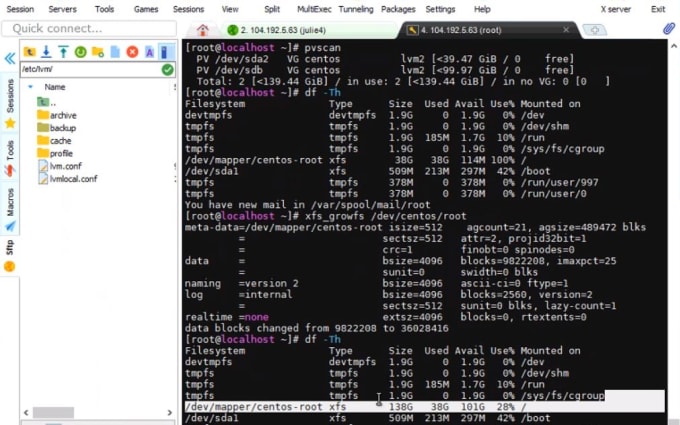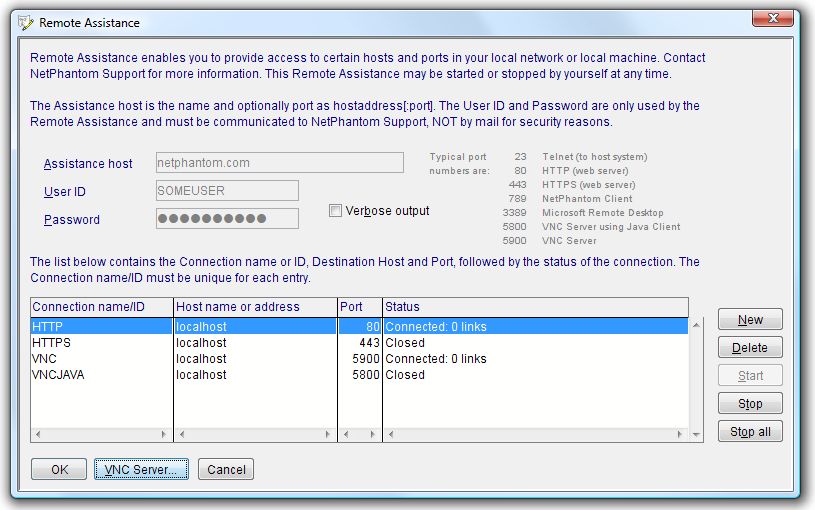

- #Remoter vnc backup config mac os x#
- #Remoter vnc backup config install#
- #Remoter vnc backup config manual#
- #Remoter vnc backup config full#
- #Remoter vnc backup config software#

You can test by rebooting your Linode and connecting to the VNC server.
#Remoter vnc backup config manual#
# For example, you can run a backup of all your user accounts # at 5 a.m every week with: # 0 5 * * 1 tar -zcf /var/backups/home.tgz /home/ # For more information see the manual pages of crontab(5) and cron(8) # m h dom mon dow /usr/bin/vncserver :1 # Output of the crontab jobs (including errors) is sent through # email to the user the crontab file belongs to (unless redirected). # Notice that tasks will be started based on the cron's system # daemon's notion of time and timezones. # Each task to run has to be defined through a single line # indicating with different fields when the task will be run # and what command to run for the task # To define the time you can provide concrete values for # minute (m), hour (h), day of month (dom), month (mon), # and day of week (dow) or use '*' in these fields (for 'any'). # Edit this file to introduce tasks to be run by cron. This starts the desktop dependencies as background processes upon starting the VNC server: Close the VNC server: vncserver -kill :1Įdit the end of your ~/.vnc/xstartup file to match the following configuration. Once you’ve successfully connected, exit the connection.
#Remoter vnc backup config full#
This section will configure VNC to launch the full Unity desktop when it starts. In the next section, we will configure your Linode to launch a full desktop. You’ll see a blank gray screen since the desktop processes have not yet started. In the password section fill in the password you specified in The :1 in the server field corresponds to the display number. Name your profile, specify the VNC protocol, and enter localhost:1 in the server field. This guide will use Remmina, which is installed by default.Ĭlick the button to Create a new remote desktop profile. There are a variety of VNC clients available for Ubuntu desktops.

In the next section we will configure your Linode to launch a full desktop. The format is localhost:#, where # is the display number we used in theĪfter connecting, you will see a blank gray screen since the desktop processes have not yet been started. While there are many options for OS X and Windows, this guide will useĪfter installing and opening the viewer, connect to the localhost through your VNC client.
#Remoter vnc backup config software#
A viewer is the software that draws the graphical display generated by the server and creates the output on your local computer. In this section, you will use a VNC client, or viewer, to connect to the remote server. You will be prompted to set a password: vncserver :1 Launch the VNC server to test your connection. Click save to save your settings for future use, and then click open to initiate your SSH tunnel. Enter your Linode’s hostname or IP address and a title for your session. Add a new forwarded port as shown below, replacing with your Linode’s IP address or hostname:Ĭlick Add, then return to the ‘Session’ screen. PuTTY and navigate to Tunnels under the SSH section in the menu. Initiate your connection as per the steps in theĬonnect to VNC from your Desktop section. Be sure to replace with your username and your Linode’s hostname or IP address: ssh -L 5901:127.0.0.1:5901 your Linode, launch the VNC server to test your connection.
#Remoter vnc backup config mac os x#
Mac OS X and Linuxįrom your desktop, connect to your Linode with the following command. You can use the same local port for consistency. In order to secure your passwords and data, you will need to tunnel the traffic through an SSH connection to a local port. The default VNC connection is unencrypted. This guide will use a display number of 1 therefore, you will connect to remote port 5901. VNC connections take place on port 5900 + display. If no display number is defined, the server will use the lowest one available. The VNC server generates a display, or graphical output, identified by a number that is defined when the server starts.
#Remoter vnc backup config install#
Install the VNC server: sudo apt-get install vnc4server Type y then enter to use the updated version. The default action is to keep your current version. Z : start a shell to examine the situation N or O : keep your currently-installed versionĭ : show the differences between the versions Y or I : install the package maintainer's version What would you like to do about it ? Your options are: => File also in package provided by package maintainer. => File on system created by you or by a script. To install the desktop without these packages, run: sudo apt-get install -no-install-recommends ubuntu-desktop gnome-panel gnome-settings-daemon metacity nautilus gnome-terminalĭuring the install process, you will be asked whether or not to change a system file to the new version: Configuration file '/etc/init/nf' This will install the full Ubuntu desktop environment, including office and web browsing tools.


 0 kommentar(er)
0 kommentar(er)
